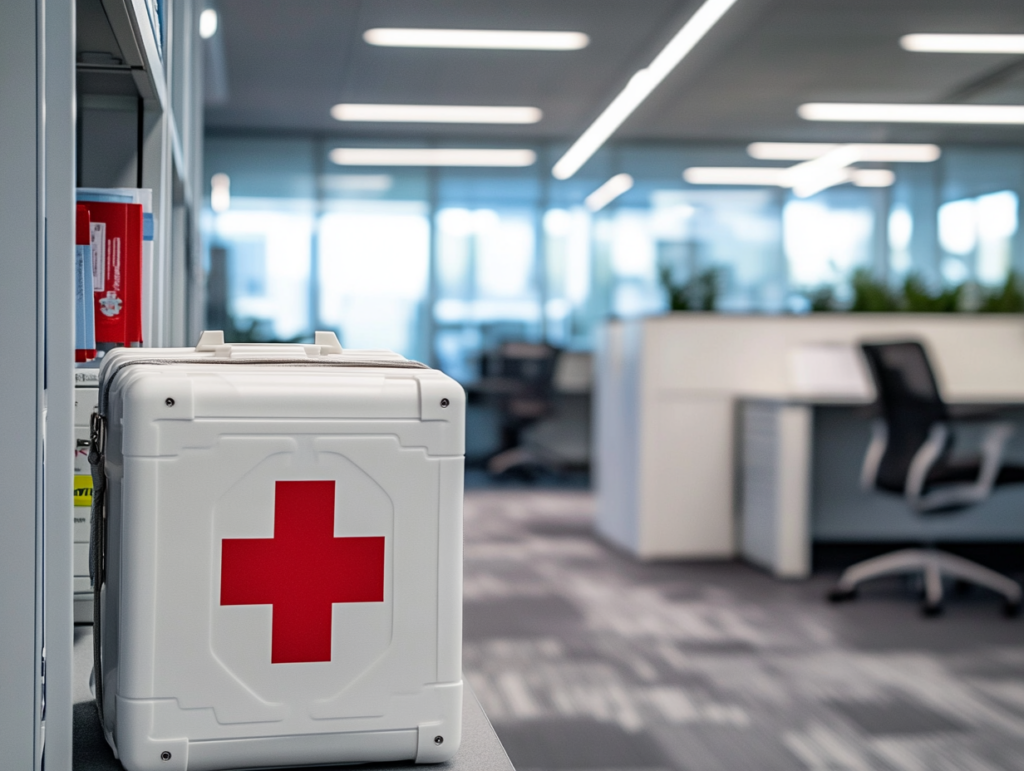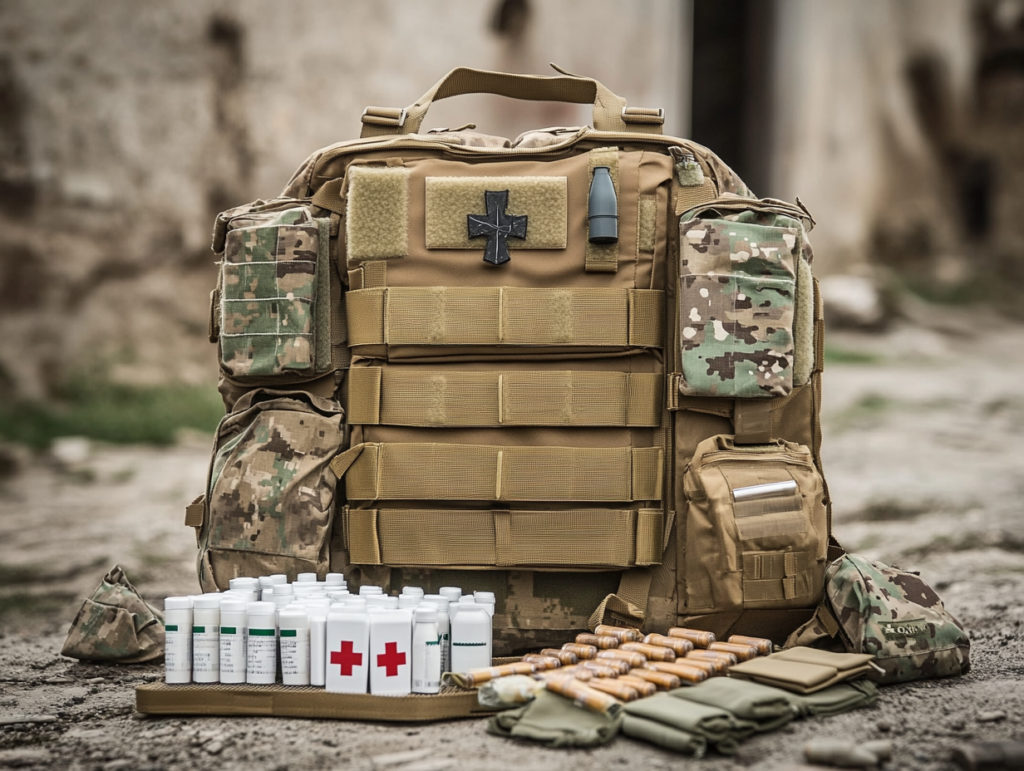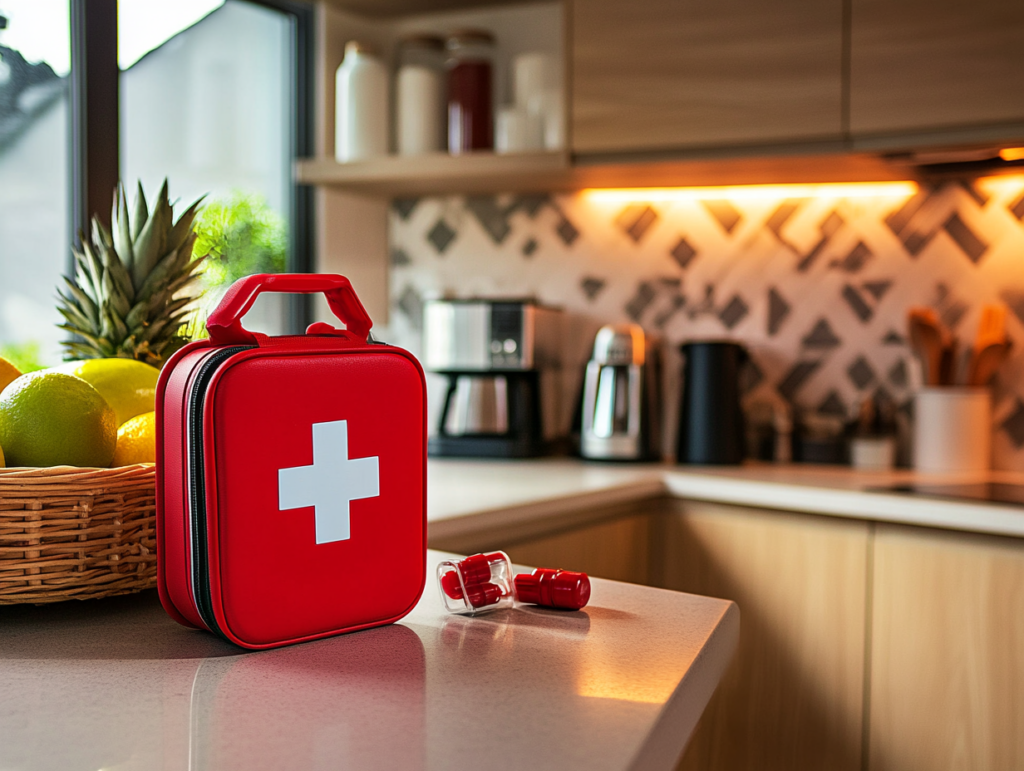Assessing the Enterprise Environment and Risk Factors
1. Workplace Characteristics
Production Workshop
When an enterprise has large production equipment and assembly lines, workers often touch machine parts, making mechanical accidents like clamping and entrapment highly likely. Thus, the first aid kit must have a tourniquet for emergency limb hemostasis. Also, provide a professional debridement and suture instrument kit (usable by trained first aid staff) to handle deep, irregular open wounds. Given the workshop’s high noise and communication limits, equip simple calling tools like whistles.
Warehouse
During goods handling, incidents such as heavy objects falling on feet or back strains can occur. Besides standard trauma treatment supplies, prepare cold packs to relieve initial swelling and pain. If the warehouse has poor ventilation and potential chemical leakage risks, the first aid kit should contain chemical burn neutralizers, protective goggles, and other protective and first aid essentials.
Office Area
With numerous computer devices, employees may sit for long hours, triggering acute neck and lumbar muscle strains. Put heat patches in the first aid kit to ease the pain. Moreover, due to many office electrical appliances, there’s an electric shock risk. So, include a leakage detection test pen and an insulating blanket to prevent shock accidents from worsening.
2. Operational Process Risks
Food Processing Enterprises
Employees here frequently use knives to cut food, leading to a high risk of hand cuts. Therefore, increase the reserves of consumables like band-aids and bandages in the first aid kit. Also, equip waterproof and antibacterial wound dressings to prevent wound infections that could affect food hygiene. Given the humid environment, package medicines in a moisture-proof way.
Chemical Enterprises
Apart from guarding against common mechanical and scald risks, focus more on chemical poisoning. The first aid kit should contain antidotes (specific to the enterprise’s commonly used chemicals), eyewash solutions for immediate eye and skin decontamination after chemical contact. Additionally, provide professional gas masks to stop toxic gas inhalation.
Checking the Contents of the First Aid Kit
1. Basic Medical Supplies
Wound Treatment
Band-aids come in various sizes to treat small wounds on fingers, elbows, knees, etc. Use sterile gauze and bandages to cover and bind larger wounds, like when the arm has a significant abrasion. Medical tape secures the gauze and bandage.
Disinfection and Cleaning
Iodophor cotton swabs and alcohol cotton balls make wound disinfection easy to prevent infection. For instance, if a finger gets cut by paper, use an iodophor cotton swab to wipe and disinfect first.
2. Medicines for Common Illnesses and Injuries
Pain Relief and Fever Reduction
Common drugs like ibuprofen and acetaminophen can temporarily relieve headaches and fevers in employees.
Gastrointestinal Medications
Huoxiang Zhengqi Liquid can address summer heatstroke, gastrointestinal discomfort, and indigestion. Smecta proves useful when employees have diarrhea.
Cardiovascular Medications
In some enterprises with older or cardiovascular disease-prone employees, have nitroglycerin and other drugs in the first aid kit for prompt use during sudden angina pectoris.
3. Special Supplies
If the enterprise has a cafeteria or similar places with scald risks, include scald ointment. For enterprises with electric shock hazards, insulating gloves and related protective and first aid supplies are necessary.
Considering the Quality and Certification of the First Aid Kit
1. Quality Aspect
The first aid kit material should be durable. Ideally, the kit body is waterproof and wear-resistant to adapt to various placement environments and resist long-term damage. The medical supplies inside must also be reliable. For example, a band-aid needs appropriate adhesiveness and good air permeability to avoid harming the wound. Ensure medicines are within the expiration date and from legitimate sources.
2. Certification Situation
Opt for a first aid kit that has obtained formal medical device certification. This guarantees it meets relevant quality and safety standards and functions effectively in emergencies.
Portability and Ease of Use of the First Aid Kit
1. Portability
For enterprises with outdoor work or business trips, design the first aid kit to be lightweight and portable. Some kits have hand-held or shoulder-strap designs, enabling employees to carry and access them conveniently while on the move.
2. Ease of Use
The first aid kit’s item layout should be logical, with clear classifications and labels. This allows non-professional staff to quickly locate needed supplies during an emergency.
Cost Budget
1. Initial Procurement Cost
Research different brand and grade first aid kits. Basic ones, with simple functions and a basic configuration, suit small start-ups or low-risk offices, costing tens to hundreds of yuan. Professional kits, rich in medicines and high-end medical equipment for complex, high-risk scenarios, can cost hundreds to thousands of yuan. Enterprises should weigh the cost-performance ratio based on actual needs and select suitable products. When making bulk purchases, negotiate with suppliers for discounts. Generally, larger orders get better deals. Use centralized procurement and long-term agreements to cut unit procurement costs.
2. Later Maintenance Cost
Medicines expire and need regular checks and replacements. This cost is significant. Estimate the annual medicine renewal cost. For example, consumables like iodophor and band-aids are used heavily, and their annual replenishment cost may be about 10% – 20% of the kit’s procurement cost. Some medical devices, like sphygmomanometers and glucometers, may need regular calibration, maintenance, or replacement when faulty. Account for these potential costs in the budget.
Supplier Services
1. Training Support
Professional first aid knowledge training is crucial. Suppliers should offer courses covering cardiopulmonary resuscitation (CPR), the Heimlich maneuver, wound dressing, etc. Training can be diverse: on-site demos, online videos, and illustrated manuals. Aim for at least one annual training to ensure new hires get trained and old staff refresh their skills. Customize training to enterprise needs. For example, chemical enterprises focus on chemical poisoning first aid, while construction enterprises emphasize fracture fixation and trauma handling.
2. Replenishment and Renewal Services
Suppliers must establish a quick and efficient replenishment system. Enterprises should receive supplementary medicines and consumables within 3 – 5 working days of ordering, ensuring the first aid kit is always ready. Suppliers should also track medicine and device expiration dates and alert enterprises in advance for updates. With medical tech advances and changing enterprise environments, suppliers should promptly recommend better first aid products. For example, when new, highly absorbent hemostatic materials emerge, notify enterprises and offer trials and replacements to optimize kit configurations.


